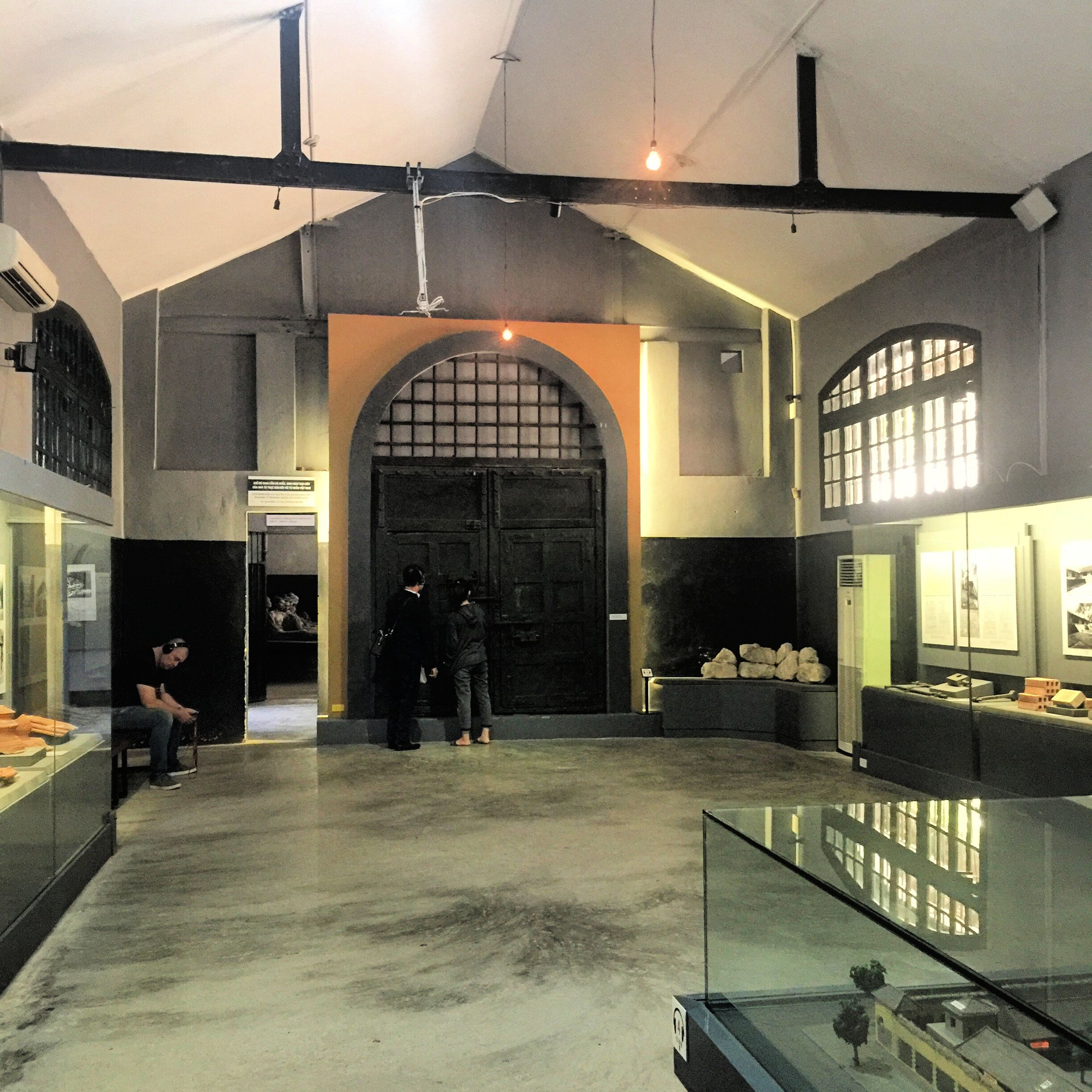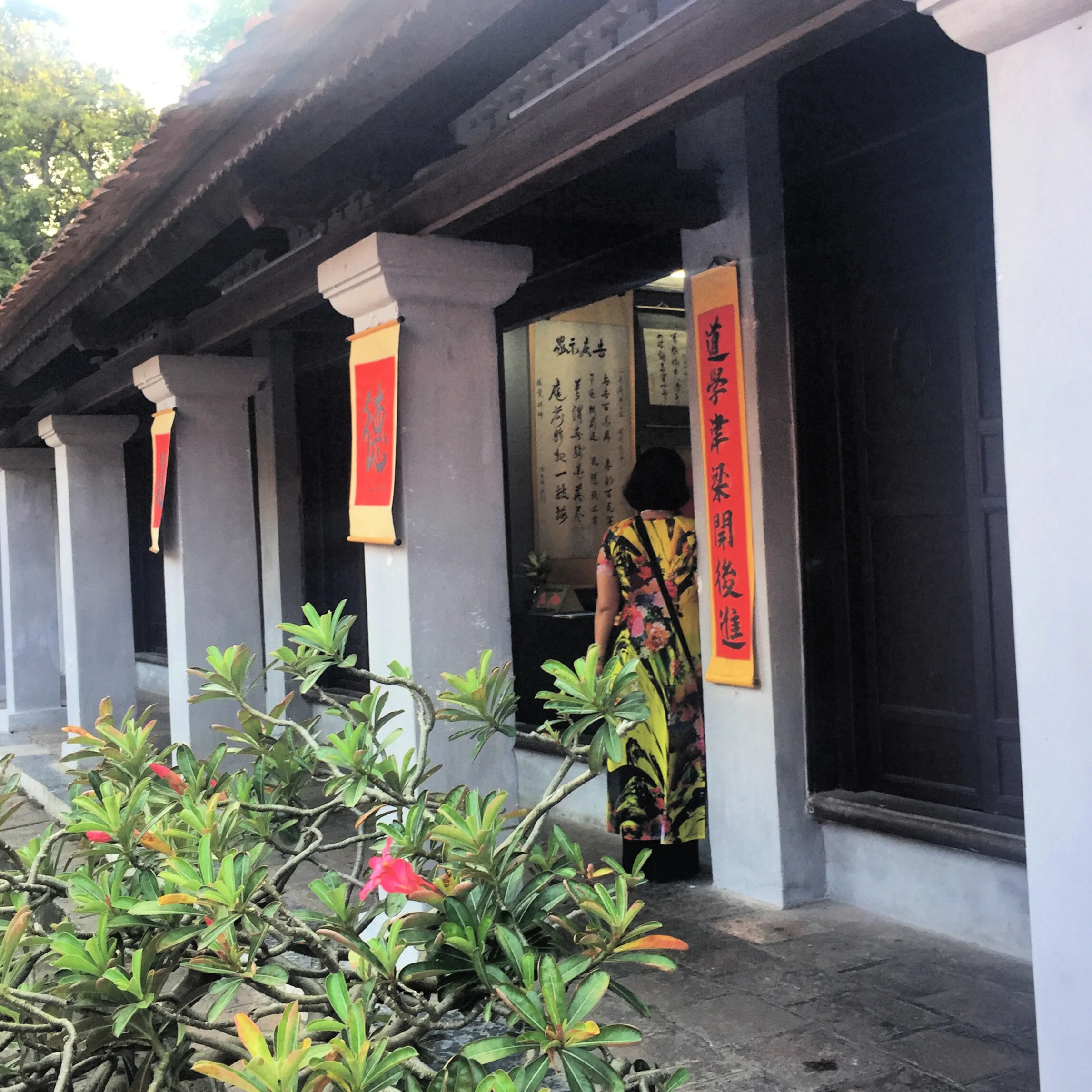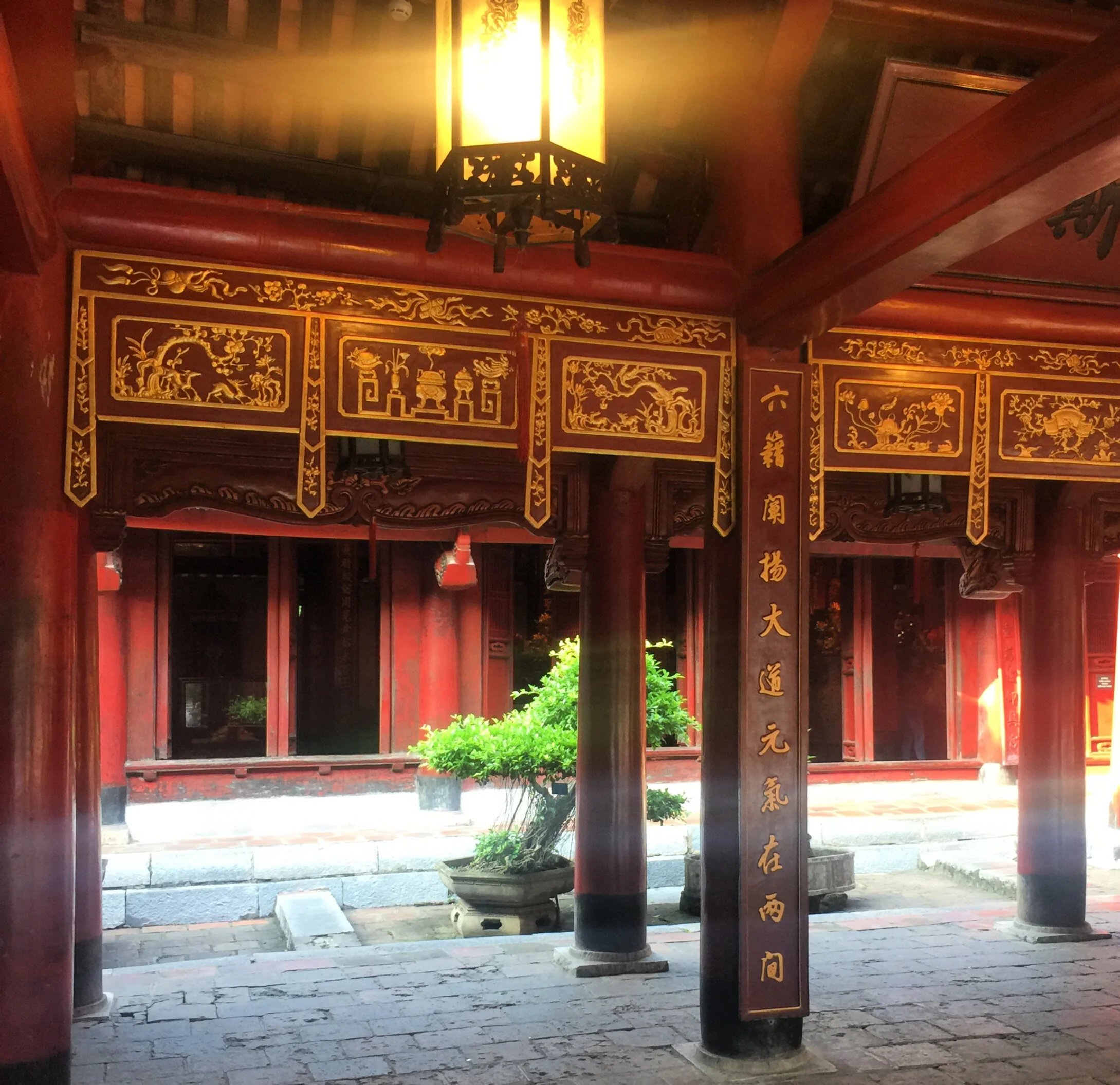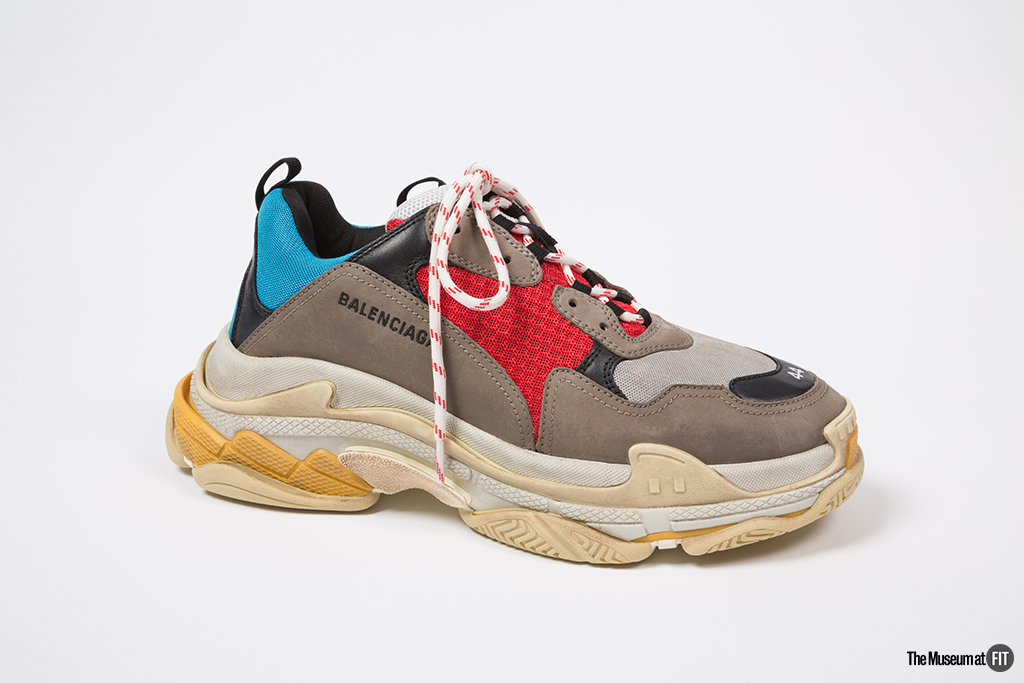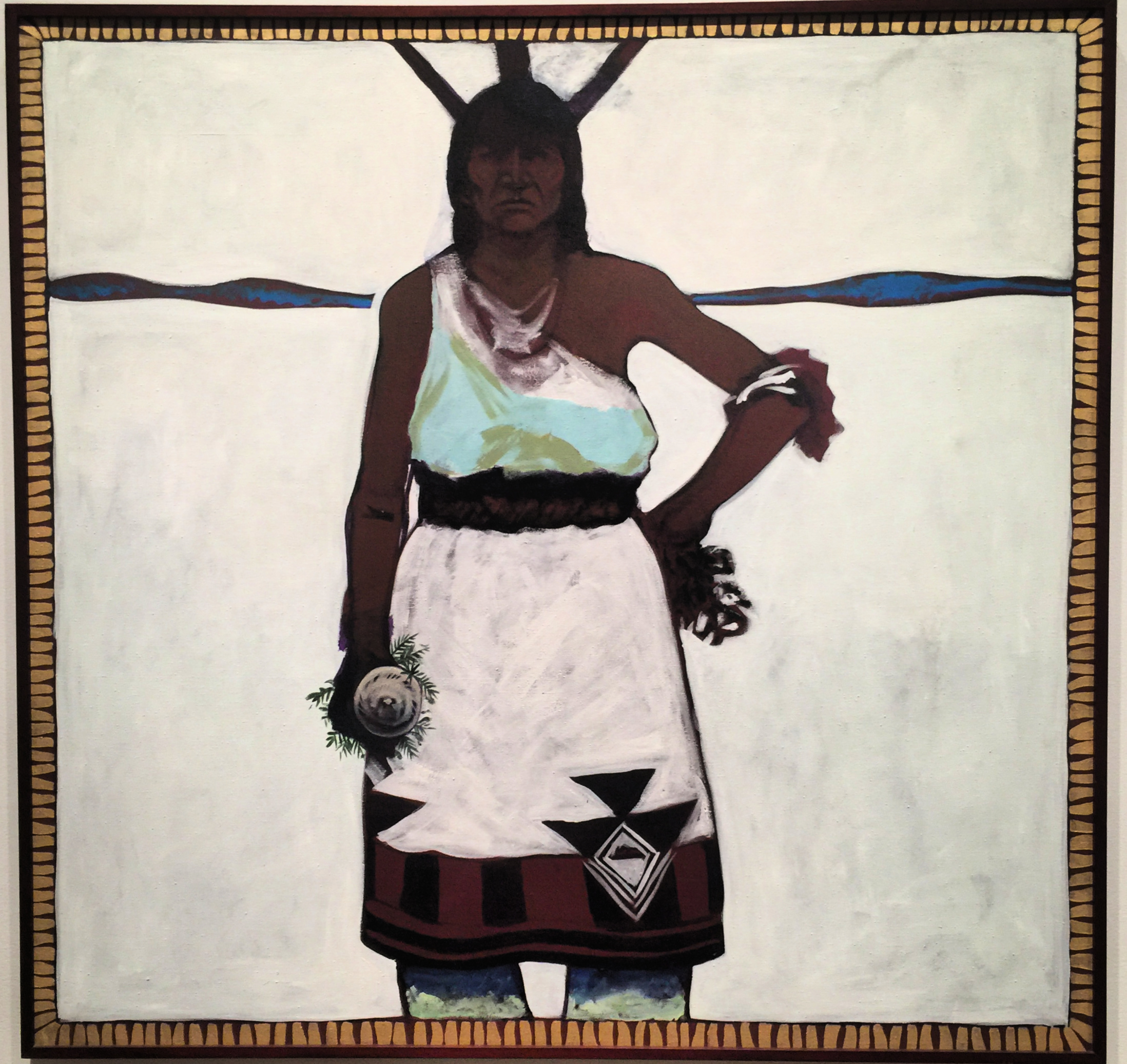With 17,622 google reviews at the time of my writing, Chợ Đồng Xuân (Dong Xuan Market) may be the most popular tourist attraction in Hanoi. And . . . it’s awful.
The market itself is a 4 story Soviet style behemoth, with open balcony interiors looking down on a central atrium. Structure is minimal, with booths variously constructed of shelving, chain link fence, and sometimes just curtains. They overflow into one another, and into the tiny walking spaces between them. Stalls are roughly grouped by category (keys, fabric on the bolt, fans, bluetooth speakers, kids clothes, shoes, etc.)
The market radiates from the building into its surrounding streets (Hàng Khoai, Cầu Đông, Đồng Xuân, Cao Thắng, Nguyễn Thiện Thuật). Every block is coated with storefronts selling infinite volumes of dross, then crusted with street food sellers, walking and bike peddlers, and motorbike taxi drivers.
An upward glance reveals a shantytown skyline. A few sellers were clearly living out of their booths; I suspect many more spend their nights packed like sardines across the street, heading back to their villages every now and then.
The chaos and filth actually don’t bother me. I can spend hours rifling through the bins at Goodwill, or tinkering at a flea market. I hated this place for the two most obvious reasons: the merchandise and the people.
The merchandise is 100% China-made garbage. Thrown into mountains as tall as I am, stacked up to ceilings, shoved into crevices . . . the polyester and plastic shout that humanity is a parasite killing its host. Are there even enough people in Hanoi to consume all this dreck? I doubt it, especially considering buyers of this sort of thing don’t have enough money to make frequent purchases. This stuff wasn’t worth the environmental impact of its manufacture.
Apart from the appalling quality and styles on offer, there’s extremely little variety. It was dizzying and disappointing to tiptoe down each tiny unmapped path, only to realize the suitcases, backpacks, fabrics, shoes, designer knockoffs, and fake-handmade “Vietnamese” souvenirs were exactly the same wherever I turned. For example, I saw literally thousands of the same few Elsa/Frozen themed backpacks, but not a single packing cube (which I really need right now).
Even so, I planned on walking away with a hat (because I forgot mine, and could feel my skin burning) and perhaps even a pair of Gucci-Vuitton-New York Yankees logo slides as a lark. I didn’t, because the people here were pretty gross negotiators.
For those of you who don’t know my past lives, I’m a great bargainer. I won’t spout off my whole resumé, but rest assured that I’m comfortable both gingerly mediating a $12 million CPW co-op deal and energetically haggling a 20% discount on Ted Lapidus shades at the Hell’s Kitchen flea market. I went to school for it. I am certified in it. And I found the bargaining at this market distasteful and tiresome.
It may be different for other visitors, but as a 30-something white woman I am a walking dollar sign. Of course, I also know how much things cost on AliExpress, so I know what I’m willing to pay. The sellers in this market (and Vietnam in general) tend to push too hard and long for too much, and lose the sale.
For example, a girl selling hats initially quoted me the equivalent of $7.52 for a hat that absolutely did not cost her more than 60 cents. For reference, a handmade, high quality hat can be purchased in a classy boutique on Silk Street for between $10.50 and $14.20; there’s no practical need to overpay for trash in this lowbrow capitalist inferno.
I offered $4, then $5, but she simply would not come down past $6.88 on what I know to be a 45-60 cent hat, even with hundreds of them stacked waist high all around her. Instead of jumping on $5, she decided to try to wear me down by wasting my time. First she asked another hat seller girl what the price should be . . and then some other hat seller hanging around . . . then she flagged down some professional looking guy to translate, as if the language barrier was the problem, not the price. After fewer than ten minutes I rolled my eyes and walked, because I’d rather pay for a cab to avoid sunburn than buy a hat from someone like her.
I’m sure a lot of bedraggled sweaty tourists think she’s disgusting but give her the $7 anyway because they need to make it to their water puppet theater show or whatever. I bet many rationalize to themselves that $2 is not worth getting heated over and this girl probably needs the money more than them. Fuck that! People here love scamming foreigners and I refuse.
There was a similarly irritating scenario with a knockoff Goyard bag. The seller quoted me $342 (!!!) for a counterfeit Senat PM pouch, and had the audacity to tell me it was ‘real and original.’ LOLLLLLLLZZZZZ, the very definition of adding insult to injury. What Western woman has she ever met who believed new and authentic Goyard accessories are wholesaled and flown around the globe from Dong Xuan market, the commercial shithole of Hanoi?
“Third strike and I’m out” came in the form of a bottle of water. In minimarts and from street vendors, a small bottle of water costs between 21 and 26 cents. It’s a universally known norm. The lady here kept insisting that the price was 43 cents. She would not budge, would not take my money when I handed her the bill, showing me two bills . . . this woman was either so greedy or so disdainful of foreigners she was willing to die on her 22 cent hill. Byyyyyyeeeeeeeeeee.
If I’m going to overpay for cheap Chinese crap, I prefer to do so on Shopee, from the comfort of my home. I will also do it out of convenience, while I’m doing something else that I actually care about. Dong Xuan market is certainly not destination shopping.
































































































































































